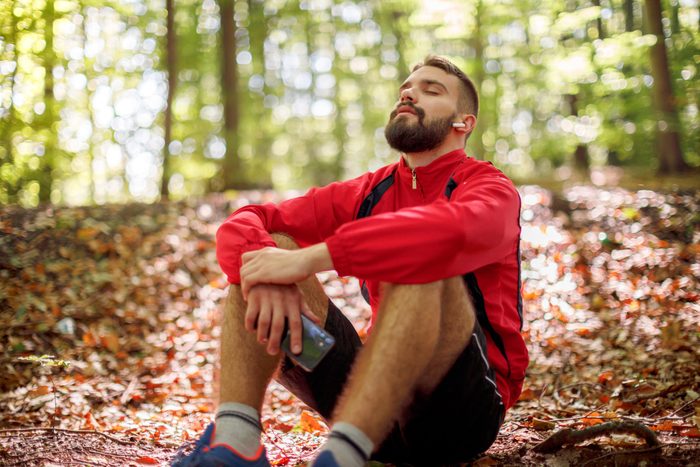
The Covid-19 pandemic has taught us a lot—including how important it is to care for the respiratory, which is the system of the body that enables us to breathe.
Not only are healthy lungs more likely to bounce back from accidents and illness, but strong lungs also contribute to overall function and wellbeing. The American Lung Association suggests 37 million Americans are living with chronic lung diseases, like asthma, emphysema, and COPD. That’s the same number of Americans who have diabetes…and these lung diseases don’t just affect smokers.
Dr. J. Tod Olin, MD, director of the National Jewish Health Exercise and Performance Breathing Center, says that even for the healthiest among us, lung function naturally declines with age—at a rate of about 1% every couple of years. Here are the best habits to keep your lungs working so it’s more likely you’ll breathe easy for the long run.
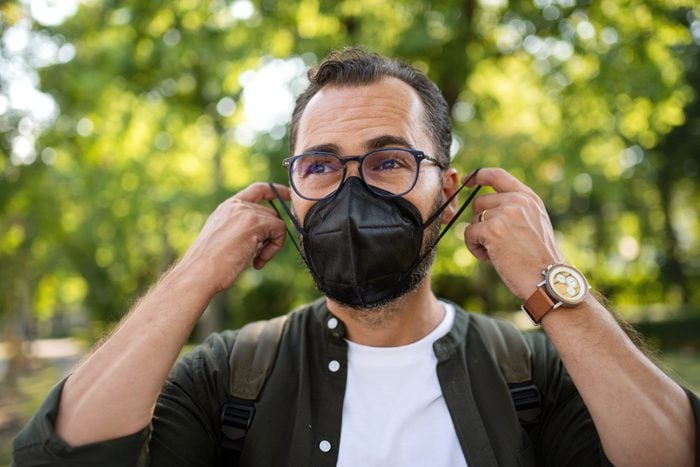
1. Prevent infection
Dr. Olin says it’s not only the immunocompromised who are prone to suffer from respiratory infections—that in fact, this is one of the biggest factors knocking elite athletes out of commission. And the more infections you get over time, the harder it is to rebound.
One of the most important habits to stave off infections and gain or maintain healthy lungs is to get enough sleep. One 2015 clinical trial published in Sleep found that people who slept less than five hours a night had a significantly higher risk of catching a cold, compared with people who slept more than seven hours a night. Adequate sleep can even optimize the effects of vaccinations.
Can’t Sleep? A New Study Found This Solution Was More Powerful Than Melatonin
Masks aren’t just for Covid
Another key tip is one many of us have practiced over the past three years: wearing a face mask. “The use of masks on planes and crowded indoor places severely reduced the number of infections seen in a lead athlete population,” Dr. Olin says.
Other ways to keep your immune system humming: wash your hands frequently, get vaccinated, exercise and eat lots of fruits and veggies.
Which Vaccines Do You Need in 2022-23? Here’s the Breakdown for All Ages
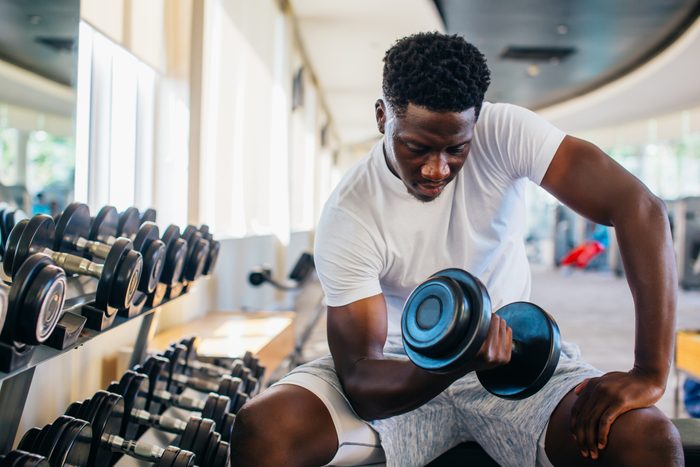
2. Exercise regularly
By that, we mean both aerobic activity and resistance training. “Gentle weight lifting or weight-bearing exercises are all good to keep muscles in good physical condition,” says Jamie Bear, a pulmonary rehabilitation therapist with the University of Colorado Hospital in Aurora. That includes the diaphragm, which is the main muscle involved in breathing. According to the American Lung Association, your diaphragm is responsible for about 80% of the heavy lifting when it comes to taking in oxygen to nourish your body and expelling carbon dioxide.
Exercise gives the lungs their own workout and boosts oxygen delivery to every part of the body, which is why national guidelines recommend at least 150 minutes a week of moderate-intensity aerobic exercise. This doesn’t have to be running. You can also try dancing, cycling or walking. Add at least two days a week of muscle-strengthening exercises like lifting weights to maintain lung fitness.
Try This Trainer’s Full-Body Resistance Band Workout to Improve Your Body Shape and Strength
Exercise may be enough
In most people exercise (aerobic and resistance) will take care of the diaphragm, adds David Vines, PhD, chairperson and professor, department of cardiopulmonary sciences at Rush University Medical Center in Chicago. He adds that aside from being one of the best habits for healthy lungs, exercise is also the single most important thing you can do to maintain overall health.
The 5 Best Yoga Poses for a Healthier Gut, from a Registered Yoga Teacher
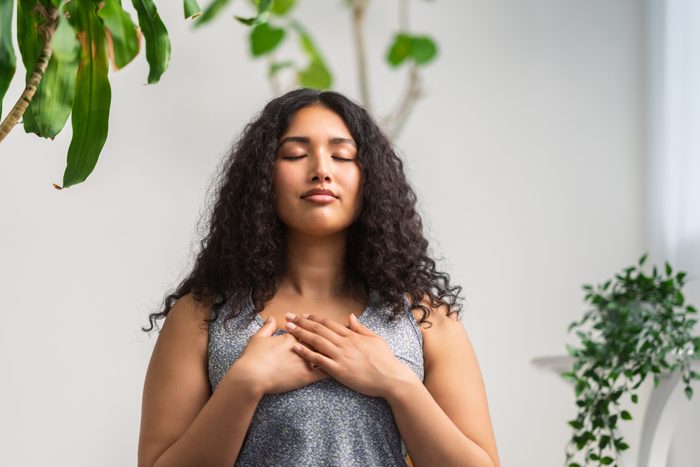
3. Breathe deeply
Frequently prescribed for people recovering from infections like Covid or living with chronic lung conditions, deep diaphragmatic (belly) breathing exercises help move stale air out of the body, making way for fresh air and more oxygen. “They’re especially important during aerobic exercise to make sure you’re moving adequate amounts of oxygen into the lungs and exhaling the carbon dioxide produced by exercise,” says Dr. Vines, who is also program director of Rush University’s Respiratory Care Program.
You can do breathing exercises sitting, standing or lying on your back or stomach. The goal is to expand your diaphragm (the muscle below your lungs which controls breathing) on the inhale. Place your hand on your stomach and breathe in through your nose. You should feel your hand rise as your stomach also rises with the inhale. Breathe out through your mouth, letting the exhale last twice as long as the inhale. Bear recommends doing this twice a day for three to five minute at a time to strengthen your lungs and reduce your stress level. You can also belly breathe while you exercise. “This is good for most healthy people,” she says.
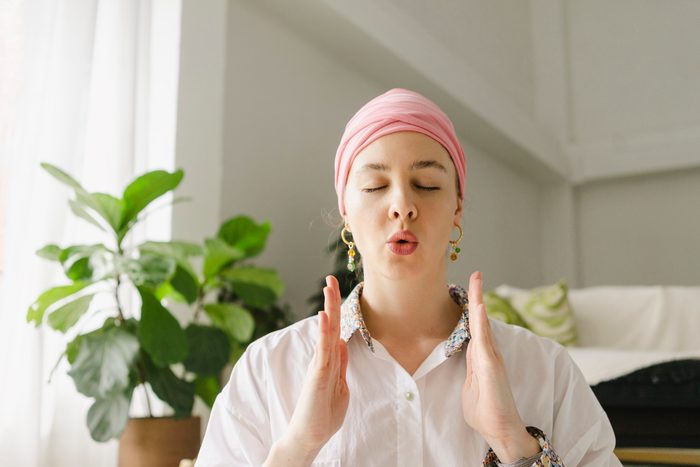
4. Try pursed-lip breathing
This is another breathing exercise often used in pulmonary rehabilitation to help people recovering from illnesses or managing life with chronic lung diseases like asthma or COPD.
Pursed-lip breathing is similar to diaphragmatic breathing but involves taking fewer breaths. Again, breathe in through the nose, feeling your belly expand with the inhale. Then breathe out slow through pursed lips. “It’s been shown to help with lung disease, helps improve our inspiratory capacity [Editor’s note: this is defined as the maximum volume of air you can breathe in after you breathe out] and decreases oxygen consumption,” says Bear. It’s especially beneficial while you’re exercising. “Pursed-lip breathing is for when you’re feeling breathless or if you’re doing activity,” says Bear, who is also a member of the American Association for Respiratory Care. “Pursed-lip breathing with exertion really is good for anyone.”

5. Hum
Adding some humming to the exhale helps increase nitric oxide production, according to Johns Hopkins Medicine. This matters because nitric oxide dilates (widens) blood vessels, the delivery vehicle for oxygen. One small study found that humming while you exhale increased nitric oxide production 15-fold, compared with a silent exhale. The authors stated sound waves from the humming also opened the nasal cavities.
Try this sitting straight up, with your hands on the sides of your stomach so you can feel the diaphragm stretch. Close your lips and touch your tongue to the roof of your mouth before taking a deep breath in through your nose. Hum while you exhale through closed lips. Johns Hopkins Medicine recommends doing this exercise for about one minute.

6. Pay attention to your posture
Slouching leaves less room for your lungs to expand and get oxygen to the far reaches of your body. In one study, healthy young men who sat upright scored better on one measure of breathing compared to those who slouched down in their seat.
“If you don’t have good posture or you’re slumped over in bed, that limits how deep a breath you can take,” says Dr. Vines. That’s because the diaphragm gets squished into the abdomen. “It’s about more space,” he notes. People with conditions like severe scoliosis (curving of the spine) can be especially impacted by this.
In addition to making sure your posture is straight as a habit for healthy lungs, every once in a while, stretch your arms overheard to give the organs more space.
9 Benefits of Stretching That Will Convince You to Do It Daily
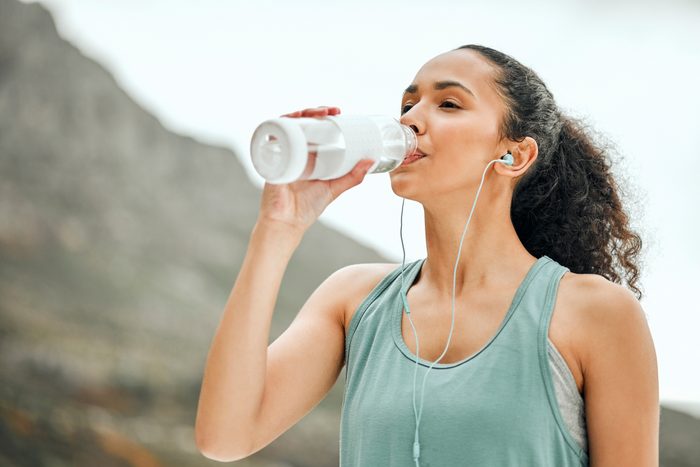
7. Stay hydrated
Our lungs are 83% water, and staying hydrated is another important habit for healthy lungs. “Hydration keeps your blood volume at a more normal level,” says Bear, which enables the blood to carry oxygen. Also, Bear adds, staying hydrated keeps the cilia (tiny hairs) in our airways mobile so they can do their job of sweeping out pathogens.
One small study found that healthy adults who were mildly dehydrated had lower function in their small airways that was easily corrected with rehydration. Although needs vary, an adult male should get about 15 eight-ounce cups of liquid a day, and an adult female, about 11 cups. This can come from both liquids (not just water) and food.
Here’s How Much Water You Really Need in a Day, with Nutritional Scientists’ Latest Wisdom
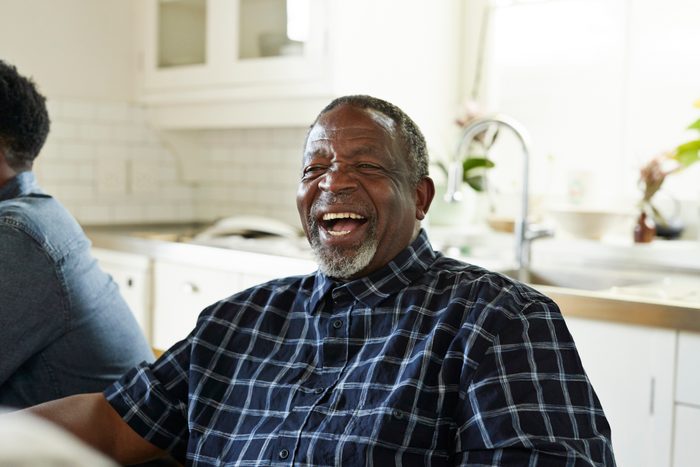
8. Laugh
When it comes to your lungs, laughing may indeed be the best medicine. In addition to lowering stress and boosting mood, laughing tightens your diaphragm, which gives the lungs a little extra workout to get oxygen in and carbon dioxide out, says the American Lung Association.
Smiling may also do the trick. In a study featuring “Pello the Clown,” researchers found improvements in the lungs of people with chronic obstructive pulmonary disease who were entertained by the clown’s antics. Specifically, smiling reduced the size of lungs that were overinflated due to trapped air.
Feeling Thankful Can Help Prevent These 7 Major Diseases, Says Research
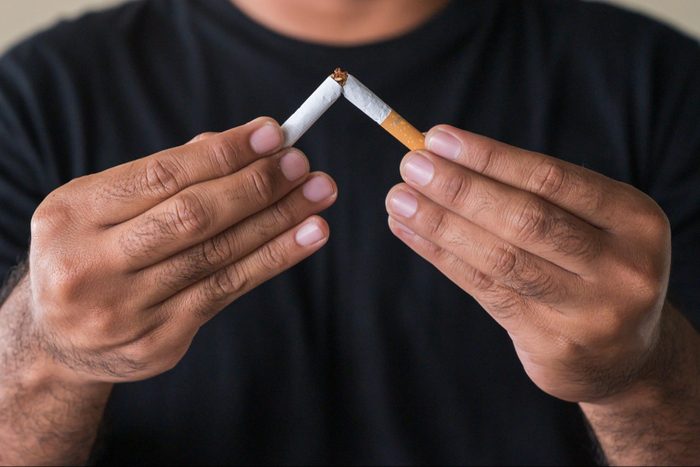
9. Don’t smoke
This bit of advice may be a no-brainer, but it’s worth repeating. “In general, people who are chronic smokers have accelerated lung function decline. Absence of smoking, generally speaking, is a good thing,” says Dr. Olin, who is also associate professor of pediatric pulmonology at National Jewish Health in Denver. Among other things, cigarette smoke dehydrates your airways and thickens your mucus.
If you do smoke, it’s never too late to quit. According to the American Cancer Society, your body will start to recover almost immediately after you quit. Carbon monoxide levels in your blood are measurably lower within days, and your lung function improves two to three months after nixing the habit. Your risk of developing several cancers, including lung cancer, drops to about half of that of someone who continues smoking.

When to see a doctor
Exercise remains the mainstay of optimal lung health—but if you find yourself short of breath to the point where you can’t moderately exercise while breathing deeply, get checked by your doctor, says Dr. Vines. Other reasons to see a healthcare professional include:
- Painful breathing
- Dizziness
- A cough that doesn’t go away or that shows up when you exercise
- Wheezing when you exercise
If needed, he or she can refer you to a pulmonary rehab program so you can get going again. “Lack of physical activity is one of the leading causes of mortality in an aging population,” says Dr. Vines.
For more wellness updates, follow The Healthy on Facebook, Instagram, and Twitter. Keep reading:
- This Smart COVID Test Should Be on Your Radar Before the Holidays, a Health Reporter Says
- Howie Mandel Details His Obsessive-Compulsive Disorder: ‘People Need to Know They Are Not Alone’
- Love to Walk or Run Outside? 6 Tools to Help You Stay Safe
- What Are the Heart-Healthiest Foods? A Cardiologist Just Opened Her Fridge to Reveal Them
